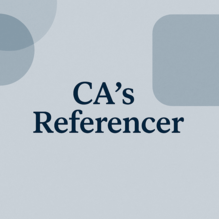How India’s GST 2.0 compares with similar tax systems in other countries
September 17, 2025
Compared to India’s GST structure, many countries levy Value Added Tax (VAT) or similar taxes. Let’s take a look at the VAT structures in some countries, which are meant for goods and services similar to India’s GST.
Since its introduction on July 1, 2017, the Goods and Services Tax (GST) regime has undergone a massive change. The recent decision by the GST Council allowing next-generation reforms marks a new era in the taxation of goods and services in India. The adoption of the simplified two-tier structure by the GST council strengthens India’s tax system, aligning with some of the best regimes globally.
The GST Council, on September 3, revised the tax slabs, allowing only two rates of 5% and 18%. The council eliminated the 12% and 28% slabs. However, a new tax rate of 40% was introduced for luxury products and sin goods. The next-generation GST reforms, called GST 2.0, will come into effect from September 22.
Compared to India’s GST structure, many countries levy Value Added Tax (VAT) or similar taxes. These taxes apply to specific goods and services in many countries, while in others, the VAT structure is a broad-based tax applied to most items.
Let’s take a look at the VAT structures in some countries, which are meant for goods and services similar to India’s GST.
GST in Australia
It introduced GST in 2000 at a flat rate of 10%. The GST system is managed by the Australian Taxation Office, which collects the tax and redistributes it to the states. Many essential items, like fresh food, health services and education, attract zero per cent tax.
GST in New Zealand
New Zealand runs one of the world's cleanest GST models. Launched in 1986, it has a single slab of 15%. The tax is broad-based and has very few exemptions.
VAT in France
France, the pioneer of VAT back in the 1950s, follows a multi-slab approach. The standard VAT rate is 20%, with lower rates of 10%, 5.5% and 2.1% for essentials and special goods. This shows how advanced economies often balance revenue needs with consumer welfare.
VAT in Indonesia
Indonesia currently follows a VAT system with a 11% tax rate. The VAT structure came into effect in 2022. Like India, it exempts basic commodities from VAT to offer relief to low-income groups. However, the country increased the standard rate for luxury goods and services to 12% from January 2025.
VAT in the United Kingdom
The UK adopted Value Added Tax (VAT) in 1973, replacing the earlier Purchase Tax system. In 2011, the standard VAT rate was increased to 20% from 17.5% earlier. Some goods and services fall under a reduced 5% rate, while a few items are taxed at zero per cent or are entirely exempt.
Sales Tax System in the United States
The United States does not follow a nationwide VAT or GST. Instead, it relies on a sales tax system set at the state level. The sales tax rates vary between 2.9% and 7.25% across different states. The sales tax is applicable at the final point of sale, which is collected by the seller and remitted to the state or local authorities.
India’s latest GST reforms could pave the way for the best global practices, while bringing the tax regime at par with the best systems in other countries.
[CNBC TV18]


